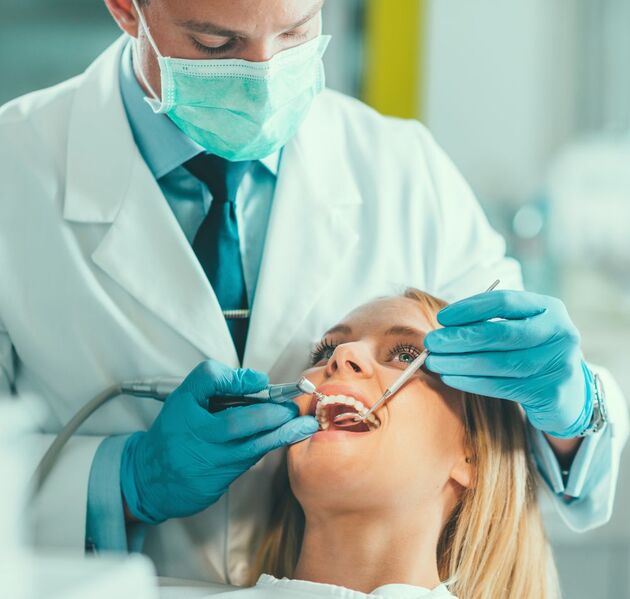Exploring Sedation Dentistry

What is Sedation Dentistry?
A specialized discipline called sedation dentistry uses several drugs to help patients stay calm and relaxed during dental treatments. Those who suffer with dental anxiety, fear, or a low pain threshold especially benefit from it. Sedation dentistry seeks to provide a more comfortable and stress-free environment for the patient and the dentist by causing a state of relaxation. This method often enables people to get required dental treatments despite their possible avoidance due to anxiety. Click here to search for top dental offices all around.
Are You Asleep with Dental Sedation?
Dentistry uses different degrees of sedation, and most of the time the patients are not totally asleep. Rather, they stay alert to stimuli and conscious. For mild forms of sedation, such as oral or nitrous oxide (laughing gas), patients usually feel quite relaxed but can still interact with the dentist all through the treatment. Deeper sedation techniques—such as intravenous (IV) sedation or general anesthesia—may cause patients to feel more drowsy to the point of almost sleep or total unconsciousness.
Is Sedation for Dental Work Safe?
In sedation dentistry, safety takes front stage. Dentists carefully review the patient's medical history and general condition before prescribing any sedative drugs to guarantee the selected sedative approach is appropriate and safe. The dental team continuously checks the patient's vital signs during the operation to preserve safety and make necessary corrections. For most patients, sedation dentistry is deemed safe when carried out under controlled conditions and by qualified experts.
Can You Feel Pain When Sedated?
In order to reduce pain and discomfort during dental treatments, sedation dentistry seeks to Although some patients could still experience minor sensations, the sedative drugs greatly help to lower pain sensation. Moreover, local anesthesia is sometimes combined with sedation to numb particular areas, so guaranteeing a more pleasant experience.
Can You Be Awake While Sedated?
Most forms of sedation applied in dentistry allow patients to be generally conscious and responsive to the dentist's directions. Patients can often react to stimuli even in deeper degrees of sedation, when they might feel closer to sleep or experience drowsiness.
What Anesthesia Do Most Dentists Use?
In dentistry, the most often used anesthesia is local one, such lidocaine. Direct administration of it to the treatment area helps to block pain sensations so enabling pain-free dental operations. Many times, this local anesthesia is supplemented with sedation techniques to help the patient feel more at ease and comfortable.
What Type of Anesthesia is Most Frequently Used in Dentistry?
In dentistry, the choice of anesthesia depends on several elements including the degree of anxiety of the patient, the complexity of the operation, and their medical past. Usually, minor procedures and regular dental treatments call for local anesthesia. While IV sedation and general anesthesia are reserved for more extensive or invasive treatments requiring deeper degrees of sedation, nitrous oxide and oral sedation are often preferred for less invasive procedures.
What type of Sedation is Used in Pediatric Dentistry?
In pediatric dentistry, the method of sedation usually gives young patients's safety and comfort top priority, especially in cases of anxiety or trouble staying still during dental treatments. Usually, the choice of sedation is based on the particular needs of the child as well as the complexity of the necessary treatment.
Several types of sedation are commonly employed in pediatric dentistry:
Nitrous Oxide (Laughing Gas)
Widely used in pediatric dental offices, nitrous oxide is a mild sedative given through a mask over the child's nose. It helps the child relax and lessens anxiety without making him unconscious. One of its main benefits is that the child may resume regular activities free from residual sedative effects since the effects fade fast following the operation.
Oral Sedation
This entails the child taking pills or liquid form of medications before the dental operation. While maintaining the child conscious and cooperative during the treatment, oral sedation seeks to produce a deeper level of relaxation. The child's age, weight, and medical history help to carefully determine the dosage.
IV Sedation
Often used for more difficult operations in pediatric dentistry, intravenous sedation lets one exactly control the dosage of the sedative. Although it causes more depth of sedation than nitrous oxide or oral sedation, it still lets the youngster remain conscious and react to stimuli. It calls for specific instruction and close observation under the direction of a qualified dentist or anesthesiologist.
General Anesthesia
Sometimes, particularly for children with special needs or for major dental work, general anesthesia is used. Usually presented in a hospital environment, this renders the child totally unconscious during the operation. In pediatric dentistry, general anesthesia calls for a team of specialized experts to check the child's vital signs and guarantee safe and regulated surroundings. In pediatric dentistry, the choice of sedation is based on several criteria including the child's age, medical history, degree of anxiety, and complexity of the dental operation. Working closely with parents or caregivers, pediatric dentists discuss and choose the most suitable sedation technique that guarantees the child's safety and comfort and so promotes effective dental treatment. Establishing a good and stress-free dental experience for young patients depends on regular, honest communication among the dental team, child, and parent. For those with dental anxiety or phobia, sedation dentistry is a useful tool that lets them get required treatments in a calm and comfortable environment. Knowing the several forms of sedation that are accessible and talking about them with a dental practitioner will help to create a customized plan that fits the particular need of the patient and so enable a stress-free dental trip. To find the most appropriate sedation choice for particular dental treatments and personal comfort levels, always speak with a licenced dentist.


